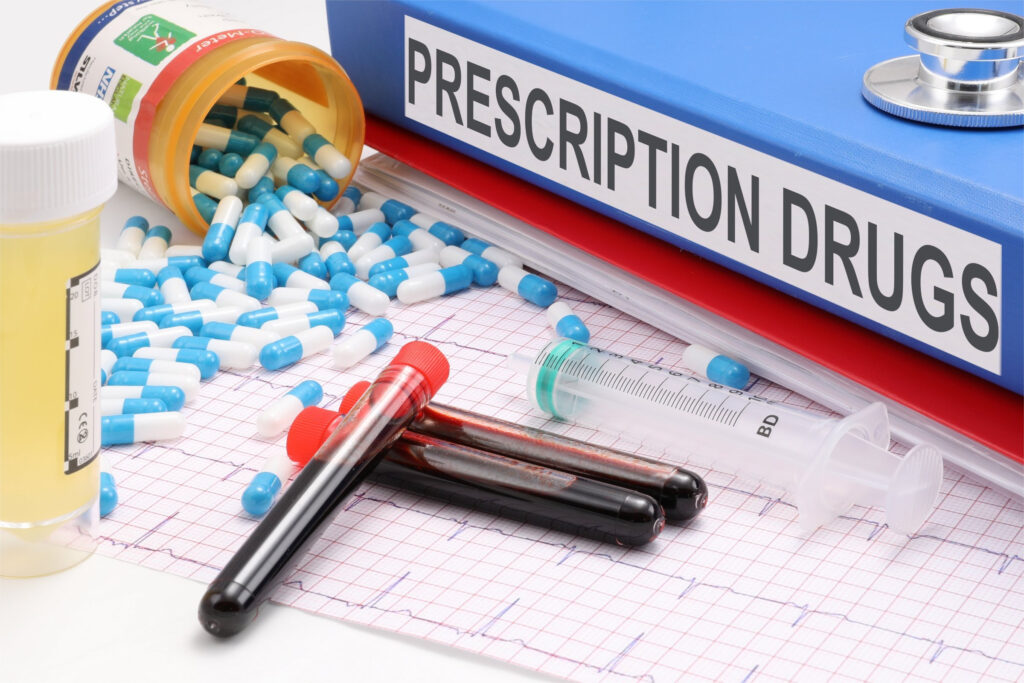Substance abuse is a pervasive problem that affects individuals, families, and communities. If you or a loved one is struggling, please don’t hesitate to reach out to us at 866-693-1454

Inpatient substance abuse treatment is an intensive type of treatment designed to help those struggling with addiction by providing them with comprehensive care in a controlled environment. This form of treatment usually involves 24-hour medical supervision, individual and group therapy sessions, medication management, and aftercare planning for continued sobriety.
Inpatient substance abuse treatment programs are often used when outpatient options have been ineffective or unsuccessful. These programs offer individuals the opportunity to remove themselves from their daily environment and focus solely on their recovery without outside distractions or triggers.
The goal of this type of program is not only to aid patients in achieving sobriety but also to equip them with the necessary tools and skills needed to maintain long-term recovery upon discharge.
Definition Of Substance Use Disorder
Substance Use Disorder (SUD) is a chronic and relapsing disorder that is characterized by the excessive use of drugs or alcohol despite negative consequences.
The Diagnostic and Statistical Manual of Mental Disorders, Fifth Edition (DSM-5) defines SUD as a problematic pattern of substance use leading to significant impairment or distress in social, occupational, or other important areas of functioning.
Substance abusers may experience intense cravings for drugs or alcohol, loss of control over their usage, tolerance to the effects of substances, withdrawal symptoms upon discontinuation, and continued use despite physical harm or adverse consequences.
These factors contribute to the cycle of addiction that can be difficult to break without professional help.
Inpatient substance abuse treatment is one form of addiction treatment that provides intensive care and support for individuals struggling with SUD.
Treatment programs are designed to address cooccurring mental health disorders, withdrawal symptoms, and provide comprehensive therapy aimed at addressing underlying issues related to substance abuse.
Inpatient treatment centers offer a structured environment where patients receive 24-hour medical supervision while participating in individual counseling sessions, group therapy sessions, family therapy sessions, and educational classes on relapse prevention strategies.
Types Of Substances
- Substance abuse is a serious issue and those seeking treatment may be struggling with the use of various substances.
- Prescription drugs are medications that are prescribed by a doctor to treat a medical condition but can be abused.
- Alcohol is a widely used substance and its misuse can lead to physical, psychological and social problems.
- Street drugs are drugs that are illegally sold and used, and can cause serious physical and psychological harm.
- It is important that all types of substances are addressed in inpatient substance abuse treatment in order to ensure successful recovery.
- Counselors must be well-versed in the effects and risks associated with all types of substances in order to effectively help their patients.
Prescription Drugs
Prescription drugs are a common substance of abuse that require specialized treatment in an inpatient substance abuse program. Medication-assisted treatment may be necessary to manage withdrawal symptoms and cravings associated with prescription drug addiction. In addition, it is important for patients to receive dual diagnosis treatment if they have underlying mental health disorders.

Inpatient rehabilitation centers offer comprehensive care and support for individuals struggling with substance use disorders related to prescription drugs. Residential treatment provides a safe environment for patients to focus on their recovery without the distractions or triggers of daily life. Addiction treatment centers utilize evidence-based approaches such as cognitive-behavioral therapy, group therapy, and individual counseling sessions to address the root causes of addiction.
The development of a personalized treatment plan is crucial for successful outcomes in treating prescription drug addiction within an inpatient setting. Treatment plans should consider the individual’s medical history, type of addiction, level of dependence, and overall physical and mental well-being.
With proper care and support, individuals can overcome their addiction to prescription drugs and achieve long-term sobriety.
Alcohol
In addition to prescription drugs, alcohol is another common substance of abuse that requires specialized treatment in an inpatient substance abuse program. Alcohol addiction can have severe physical and mental health consequences if left untreated. According to the National Institute on Alcohol Abuse and Alcoholism (NIAAA), approximately 14 million adults in the United States had alcohol use disorder (AUD) in 2019.

Inpatient rehab centers offer comprehensive care and support for individuals struggling with alcohol addiction. Residential treatment provides a safe environment for patients to focus on their recovery without the distractions or triggers of daily life. Inpatient addiction treatment typically includes behavioral therapy, individual counseling sessions, and group therapy to address the root causes of addiction.
Dual diagnosis treatment may also be necessary for patients who have underlying mental health disorders. The development of a personalized treatment plan is crucial for successful outcomes in treating alcoholism within an inpatient setting. Treatment plans should consider the individual’s medical history, level of dependence, type of addiction, and overall physical and mental well-being.
With proper care and support from an experienced substance abuse treatment program, individuals can overcome their addiction to alcohol and achieve long-term sobriety.
Street Drugs
Moving on to another type of substance abuse, street drugs are a significant concern that requires specialized treatment in an inpatient substance abuse program. Drug addiction can have severe physical and mental health consequences if left untreated.
According to the National Survey on Drug Use and Health (NSDUH), approximately 19.4 million adults in the United States had a substance use disorder (SUD) related to illicit drugs or prescription medication misuse.
Inpatient rehab centers offer comprehensive care and support for individuals struggling with drug addiction. Inpatient drug rehab provides a safe environment for patients to focus on their recovery without the distractions or triggers of daily life. Abuse treatment typically includes behavioral therapy, individual counseling sessions, group therapy, family therapy, and recovery coaching designed to address the root causes of addiction.
Hospitalization programs may also be necessary for patients who require medical detoxification due to withdrawal symptoms from long-term drug use. The development of a personalized treatment plan is crucial for successful outcomes in treating drug addiction within an inpatient setting. Treatment providers should consider the individual’s medical history, level of dependence, type of addiction, and overall physical and mental well-being when creating a tailored program specific to their needs.
Distinction Between Misuse And Disorder
The types of substances that individuals misuse or develop a disorder with can vary greatly, and it is important for healthcare providers to understand the differences between them.
Inpatient substance abuse treatment facilities provide care for those who have developed a severe use disorder. These programs offer 24-hour medical support and supervision, which ensures safety during the detoxification process. It is essential to note the distinction between misuse and disorder when considering drug rehab options.
Substance misuse refers to using drugs in an unhealthy way, such as taking more than prescribed or mixing medications without consulting a doctor. On the other hand, substance use disorders are diagnosed by specific criteria outlined in the Diagnostic and Statistical Manual (DSM), including impaired control over use, continued use despite harm, and withdrawal symptoms upon cessation.
Inpatient rehab programs typically offer multiple levels of care tailored to each individual’s needs. Treatment approaches include behavioral therapies, medication management, group therapy sessions, family involvement, aftercare planning, and mental health disorder assessment and treatment. Successful rehabilitation requires addressing both addiction and mental health issues simultaneously through comprehensive rehab programming. Outpatient programs may be recommended following completion of inpatient treatment to continue support on an ongoing basis.
Four ways inpatient substance abuse treatment differs from outpatient programs: 24-hour medical supervision, intensive daily therapies, structured environment away from triggers, and limited access to outside influences.
Overall, understanding the difference between substance misuse versus a use disorder is critical when seeking help for oneself or loved ones struggling with addiction. Inpatient rehab programs provide evidence-based treatments designed to address all aspects of recovery comprehensively. Mental health disorders must also be addressed as part of this approach since they often co-occur with addiction. With proper support and guidance throughout their journey towards sobriety, individuals stand a greater chance at achieving lasting recovery success.
Who Is Affected By Substance Abuse?
Substance abuse is a pervasive problem that affects individuals and communities worldwide.
Inpatient substance abuse treatment provides an opportunity for individuals struggling with drug or alcohol addiction to receive intensive care in a safe, supportive environment.
The impact of substance abuse extends beyond the individual using drugs or alcohol; it can also affect family members, friends, coworkers, and society as a whole.
Individuals with co-occurring disorders may benefit from inpatient substance abuse treatment because they often require more specialized care than those without these conditions.
An intensive outpatient program may be another option for those who do not require 24-hour supervision but still need structured support.
Alcohol detox is often necessary at the beginning of treatment to ensure safety during withdrawal.
Cognitive-behavioral therapy and holistic therapies are commonly used in inpatient substance abuse treatment to address underlying issues related to addiction.
Relapse prevention strategies are also emphasized throughout treatment to help patients maintain sobriety after leaving the facility.
Family therapy is offered to assist loved ones in understanding the process of recovery and how they can support their family member’s journey towards healing.
Prevalence Of Substance Use Disorder
The prevalence of substance use disorder is a significant concern that requires attention. Inpatient substance abuse treatment facilities have been established to cater to individuals struggling with drug or alcohol addiction. These centers provide specialized care and support for patients throughout their recovery journey, from detoxification to aftercare services.
The National Survey on Drug Use and Health (NSDUH) reported that approximately 20 million people aged 12 years and above suffered from a substance use disorder in the United States in 2019.
The care network provided by inpatient addiction treatment programs is essential in addressing co-occurring disorders such as mental health conditions alongside drug or alcohol addiction. Through integrated behavioral healthcare approaches like cognitive-behavioral therapy (CBT), these programs offer comprehensive rehabilitation services tailored to meet individual needs.
Intensive outpatient programs are also available, providing an alternative option for those who do not require round-the-clock supervision but still need intensive treatment.
Research shows that the success rates of inpatient substance abuse treatment vary depending on several factors, including commitment levels, severity of addiction, and length of stay. However, outcomes improve significantly with longer stays at the facility coupled with proper aftercare support services like sober living homes or community-based peer groups.
It is crucial for individuals battling alcohol and drug addiction to seek professional help promptly before they encounter irreversible adverse effects on their physical, emotional, and social well-being.
Common Substance Used
Inpatient substance abuse treatment is a comprehensive process that aims to help patients recover from drugs and alcohol addiction. During the initial phase of inpatient treatment, one common issue addressed by counselors is the identification of substances used by their patients.
The most commonly used drugs among people seeking inpatient substance abuse treatment are opioids, cocaine, marijuana, benzodiazepines, and methamphetamine. Alcohol detox is another critical aspect of inpatient substance abuse treatment. It involves a medically supervised withdrawal process intended to rid the body of toxins caused by excessive alcohol consumption.
Alcohol detox can be challenging for some individuals who may experience severe withdrawal symptoms such as seizures or delirium tremens (DTs). Therefore, medical attention and proper medication management are essential during this stage of treatment. After the detoxification phase comes types of treatments offered at recovery centers like Recovery Centers of America’s Partial Hospitalization Programs (PHP), which include counseling sessions with behavioral health professionals that focus on co-occurring mental health issues and relapse prevention strategies.
PHP programs offer more structured support than traditional outpatient services while allowing patients to return home each night. This type of program helps facilitate long-term sobriety through personalized care plans tailored to meet individual patient needs. Overall, successful inpatient substance abuse treatment requires addressing all aspects of addiction through various evidence-based interventions such as medications assisted therapy (MAT) and therapies like cognitive-behavioral therapy (CBT) along with group counseling sessions, family involvement, and aftercare planning—all aimed at helping individuals achieve lasting positive change in their lives without turning back to drug or alcohol use.
Signs And Symptoms
The signs and symptoms of drug or alcohol addiction can be difficult to spot, especially if the person is in denial about their substance use. Some common physical symptoms include bloodshot eyes, slurred speech, tremors, and poor coordination. Behavioral changes may also occur such as increased secrecy around drug or alcohol use, neglecting responsibilities at work or school, and withdrawal from social activities that were once enjoyed.
Inpatient substance abuse treatment can provide a safe environment for individuals struggling with drugs and alcohol addiction to detoxify safely. The first step towards recovery often involves an alcohol detox program which helps patients manage uncomfortable withdrawal symptoms.
Generally, inpatient drug rehab programs offer comprehensive care including individual counseling sessions, group therapy sessions, family therapy sessions, medication management services when necessary and other types of treatment modalities like cognitive-behavioral therapies (CBT), motivational interviewing (MI) etc., designed to help patients overcome their addictions.
It’s important to note that many people who struggle with addiction also have cooccurring mental health conditions. Inpatient substance abuse treatment centers are equipped to address these issues through specialized behavioral health programs tailored specifically for those dealing with both substance use disorders and mental health concerns. Patients receive ongoing assessments during their stay and access to evidence-based treatments targeted at managing underlying mental health conditions alongside addiction disorder treatment.
Additionally, these facilities often provide online resources such as patient login portals where patients can track progress after discharge from the facility.
Causes Of Substance Use Disorder
- Substance Use Disorder is a complex disorder that can be caused by a variety of factors, including genetic predisposition, stressful environments, and social influences.
- Genetic predisposition is an important factor to consider in the development of Substance Use Disorder as certain genes may predispose an individual to be more susceptible to addiction.
- Stressful environments can also be a major contributor to Substance Use Disorder as individuals may turn to substance use as a coping mechanism for difficult life events.
- Social influences can also play a role in the development of Substance Use Disorder, as individuals may be more likely to engage in risky behavior if others around them are doing the same.
- It is important to keep in mind that not all individuals with Substance Use Disorder experience the same causes, as each person’s situation is unique.
- If you or someone you know is experiencing Substance Use Disorder, it is important to seek professional help, such as inpatient substance abuse treatment, to begin the journey to recovery.
Genetic Predisposition
Genetic predisposition is one of the major causes of substance use disorder. This means that people with a family history of addiction are more likely to develop an addiction themselves. However, this does not necessarily mean that someone with a genetic predisposition will automatically become addicted to drugs or alcohol.

Environmental factors such as peer pressure and stress can also play a role in triggering addictive behavior. For those who do have a genetic predisposition towards substance abuse, seeking treatment at an inpatient substance abuse treatment center may be necessary for lasting recovery.
Inpatient programs offer intensive therapy and round-the-clock support to help patients overcome their addiction. Outpatient treatment options such as 12-step programs, online therapy, and individual therapy can also be helpful for individuals struggling with addiction. Relapse prevention is a critical component of any substance abuse treatment program, regardless of whether genetic predisposition is present or not.
Patients must learn coping strategies and skills to manage triggers and cravings that could lead them back into drug or alcohol use. Whether it’s paying for treatment out-of-pocket or utilizing insurance benefits, getting help for addiction through professional services like alcohol rehab is crucial in overcoming this disease.
Stressful Environments
Another significant cause of substance use disorder is stressful environments. People who are exposed to chronic stress, trauma, and adverse life events may turn to drugs or alcohol as a coping mechanism. This behavior can lead to addiction over time.
Furthermore, individuals with pre-existing mental health conditions such as depression, anxiety, and post-traumatic stress disorder (PTSD) are more vulnerable to developing substance abuse issues when faced with difficult circumstances.
For those struggling with addiction related to stressful environments, seeking professional help is crucial for lasting recovery. Inpatient substance abuse treatment centers provide intensive therapy and round-the-clock support for patients in need of immediate care.
Outpatient rehab options like intensive outpatient programs (IOPs), partial hospitalization programs (PHPs), and holistic therapies can also be effective in treating addiction related to stressful environments.
Recovery Centers of America and Hazelden Betty Ford are two examples of reputable organizations that offer comprehensive alcohol and other drug addiction treatment services across the United States. These facilities provide evidence-based treatments that address the root causes of addiction while promoting physical, emotional, and spiritual well-being.
Through mental health treatment, relapse prevention strategies, support groups, and aftercare planning; these facilities have helped countless individuals achieve long-term sobriety despite facing challenging circumstances in their lives.
Social Influences

Moving on to another significant cause of substance use disorder, social influences play a crucial role in the development and maintenance of addiction.
Peer pressure, cultural norms, and family dynamics can all contribute to an individual’s decision to engage in drug or alcohol abuse.
In some cases, individuals may start using substances as a means of fitting in with their peers or conforming to societal expectations.
For those struggling with addiction related to social influences, seeking professional help is essential for long-term recovery.
Inpatient substance abuse treatment centers offer intensive therapy and round-the-clock support for patients who require immediate care.
Outpatient mental health options such as intensive outpatient treatment (IOP) and partial hospitalization programs (PHPs) are also effective in treating addiction caused by social pressures.
Support groups like Alcoholics Anonymous (AA) and Narcotics Anonymous (NA) provide a sense of community for those in recovery while helping them maintain sobriety.
Additionally, family involvement and education can be beneficial in supporting loved ones through the treatment process.
Sober living environments can also provide individuals with a supportive environment that promotes abstinence from drugs and alcohol while allowing them to work towards rebuilding their lives outside of treatment settings.
Brain Chemistry And Genetics
An essential aspect of substance abuse treatment is understanding the role that brain chemistry and genetics play in addiction. The field of neuroscience has made great strides in uncovering how substances affect the reward system in the brain, leading to addictive behaviors. Additionally, research suggests a genetic predisposition may increase an individual’s likelihood of becoming addicted.
Inpatient substance abuse treatment centers like Betty Ford offer comprehensive care for individuals struggling with addiction, including addressing co-occurring disorders such as bipolar disorder or posttraumatic stress. Outpatient mental health services can also be beneficial for those who do not require intensive inpatient treatment but still need support in their recovery journey. Intensive outpatient treatment programs provide structured therapy sessions while allowing individuals to continue living at home and participating in daily activities.
Alcoholics Anonymous (AA) meetings are another common resource utilized by those seeking recovery from alcohol addiction. These meetings provide a supportive community and encourage participants to work through the 12 steps towards sobriety. While AA is not a replacement for professional treatment, it can serve as a valuable supplement to other forms of therapy.
It can be challenging to confront the role genetics may play in one’s addiction.
The stigma surrounding mental health issues often prevents individuals from seeking help.
Inpatient alcohol detoxification can be physically demanding and emotionally taxing on patients.
Recovery is an ongoing process that requires dedication and commitment to maintaining sobriety.
Without understanding the complexity behind addiction, it can be easy to view it as simply weak willpower or moral failing. However, by acknowledging the role of brain chemistry and genetics, we see that addiction is a disease that requires medical attention and evidence-based treatments. By combining various forms of therapy and resources such as AA meetings, individuals have an increased chance of achieving long-term recovery success. Remember, there is no one-size-fits-all approach to recovery – each person’s journey will look different.
Mental Health Conditions
Individuals with substance abuse issues often experience co-occurring mental health conditions that can exacerbate their addiction, make recovery more challenging or even complicate the treatment process.

One common condition is bipolar disorder, which involves shifts in mood from mania to depression and requires specialized care alongside substance abuse treatment. Another is posttraumatic stress, a debilitating anxiety-related disorder that may arise from past trauma, particularly for those with histories of military service.
Thankfully, there are many resources available for individuals struggling with these challenges.
Outpatient mental health services offer flexible scheduling and personalized care plans designed to meet unique needs while still allowing clients to continue daily activities such as work or school. Intensive outpatient treatment provides structured programming during daytime hours so that patients can return home at night after receiving individualized therapy sessions and group support.
It’s important for loved ones to understand how best to support someone going through these dual diagnoses.
They should be aware of notice of privacy practices regarding sharing information about their loved one’s treatment progress or participation in programs like sober living homes.
In addition, it’s helpful to learn more about inpatient alcohol and substance abuse treatment options that provide around-the-clock medical supervision when necessary.
With proper care and attention, individuals coping with co-occurring disorders can find sustainable recovery paths towards healthier lives.
Access And Exposure
Access and Exposure are critical components in the provision of comprehensive care for individuals with substance abuse disorders.
Inpatient substance abuse treatment programs offer a safe, structured environment where clients can receive intensive support to address their addiction issues.
However, after completing an inpatient program, it is essential that clients have access to appropriate outpatient mental health services tailored to meet their specific needs.
Clients who struggle with co-occurring mental health disorders such as bipolar disorder or posttraumatic stress may require ongoing psychiatric medication management and therapy after leaving inpatient treatment.
Intensive outpatient treatment (IOP) provides a stepping stone for clients transitioning from inpatient care back into the community while still receiving the necessary levels of support.
Outpatient centers also provide group counseling sessions such as Alcoholics Anonymous and Narcotics Anonymous meetings which allow patients to connect with others who understand what they are going through.
It is important that clients entering any type of addiction treatment program be educated on their rights regarding confidentiality and privacy practices.
Providers must obtain written consent before sharing information about a client’s treatment progress or medical history with anyone outside of the healthcare team unless required by law or court order.
Loved ones seeking updates on a patient’s progress should discuss communication expectations early on during the intake process so staff members can set clear boundaries and avoid potential conflicts down the road.
Adverse Childhood Experiences
Adverse childhood experiences (ACEs) are traumatic events that can occur during an individual’s formative years. Such experiences may include physical abuse, sexual violence, neglect or abandonment by caregivers, and exposure to domestic violence among others.
Studies have shown that individuals who experience ACEs are at a higher risk of developing substance use disorders later in life. Furthermore, the more ACEs an individual has experienced, the greater their likelihood of developing addiction becomes.
According to research conducted by Felitti et al., there is a strong correlation between the number of adverse childhood experiences and the development of addictive behaviors. In fact, those with five or more ACEs were found to be seven times more likely to become addicted than those without any such experiences.
It is important for counselors working in inpatient substance abuse treatment facilities to recognize the impact that ACEs can have on their clients’ lives. By taking into account these traumatic experiences, counselors can help clients address underlying issues contributing to their addictions and develop coping mechanisms for dealing with trauma-related triggers.
Addressing ACEs in therapy can also promote long-term recovery efforts as it provides a foundation for healing from past traumas while addressing current struggles with addiction.
Diagnostic Tools
Diagnostic tools are essential in assessing the severity of substance abuse and formulating appropriate treatment plans.
One commonly used tool is the Diagnostic and Statistical Manual of Mental Disorders (DSM-5), which provides criteria for diagnosing substance use disorders. The DSM-5 outlines various categories such as alcohol, cannabis, opioids, stimulants, sedatives, hallucinogens and others. It also highlights different levels of severity based on the number of symptoms experienced.
Another useful diagnostic tool is a comprehensive assessment that involves evaluating various aspects of an individual’s life including their physical health, mental health history, family history, social support network, employment status and legal issues related to drug use. This holistic approach helps identify underlying factors contributing to addiction and informs personalized treatment plans.
In addition to these standardized diagnostic tools, healthcare providers should also consider the cultural background and unique needs of each patient when developing a diagnosis and treatment plan. A culturally sensitive approach can help foster trust between patients and healthcare professionals while ensuring that interventions are tailored to meet individual needs.
Ultimately, accurate diagnosis supported by comprehensive assessments facilitates effective treatment planning leading to improved outcomes for those seeking recovery from substance use disorders.
Treatment Approaches
- Medication-assisted therapy is an approach to treating substance abuse that involves the use of specific medications to reduce cravings and withdrawal symptoms.
- Cognitive Behavioral Therapy is a form of therapy that focuses on identifying and changing the thought patterns and behaviors that contribute to addiction.
- Motivational Interviewing is a client-centered approach that emphasizes individual motivation to change and works to strengthen the patient’s commitment to their recovery.
- These approaches can be used together to provide a comprehensive treatment plan.
- All three methods have been proven to be effective in treating substance abuse disorders.
- Each approach has its own benefits and limitations that should be taken into consideration when creating a treatment plan.
Medication-Assisted Therapy
Medication-assisted therapy (MAT) is an evidence-based treatment approach that combines medications with counseling and behavioral therapies to help individuals struggling with substance abuse disorders. MAT is commonly used for opioids, alcohol, nicotine, and other substances. The goal of this approach is to ease withdrawal symptoms, reduce cravings, and prevent relapse.

One common medication used in MAT is methadone for opioid addiction. Methadone helps patients manage their withdrawal symptoms without experiencing euphoria or sedation.
Another medication used for opioid addiction is buprenorphine-naloxone, which also reduces cravings and alleviates withdrawal symptoms but has a lower risk of overdose than methadone. Medications like acamprosate and naltrexone are prescribed for alcohol use disorder as they can reduce the desire to drink.
While MAT has been proven effective in treating substance use disorders, it’s important to note that medications alone cannot fully address the problem. Counseling and behavioral therapies play a crucial role in helping patients develop coping skills, learn how to identify triggers, improve communication skills, build healthy relationships, and enhance overall wellbeing.
Moreover, the choice of medication should be tailored based on individual needs and medical history under close supervision by healthcare providers.
In summary, medication-assisted therapy offers an effective solution for those struggling with substance use disorders when combined with counseling services. It significantly improves patient outcomes by reducing the likelihood of relapse while easing discomfort during withdrawals. However, it’s vital not to rely solely on these prescription drugs since they only treat physical dependence rather than addressing underlying emotional or environmental factors contributing to the addiction.
Cognitive Behavioral Therapy
Another effective treatment approach for substance use disorders is cognitive-behavioral therapy (CBT). CBT is a type of talk therapy that focuses on changing negative patterns of thoughts and behaviors. It aims to help patients identify and challenge their irrational beliefs, learn coping skills, improve problem-solving abilities, and build positive relationships.
In CBT sessions, patients work with therapists who guide them through various techniques such as role-playing exercises or journaling to explore underlying issues contributing to addiction. By gaining insight into the roots of their behavior, patients can then develop healthier ways of thinking and responding to triggers without resorting to drug use.
Studies have shown that combining MAT with CBT produces better outcomes than either approach alone. For example, one study found that individuals receiving both buprenorphine-naloxone and CBT had significantly lower rates of opioid use compared to those only receiving medication. This highlights the importance of addressing not just physical dependence but also psychological factors in treating substance abuse disorders.
Overall, cognitive-behavioral therapy provides an essential component in treating substance use disorders alongside MAT. It offers a holistic approach by targeting the emotional and mental aspects of addiction while helping individuals adopt healthy coping mechanisms for long-term recovery.
Motivational Interviewing
In addition to cognitive-behavioral therapy and medication-assisted treatment, another effective approach in treating substance use disorders is Motivational Interviewing (MI).
MI is a person-centered counseling style that aims to enhance an individual’s intrinsic motivation for change. The goal of MI is not to persuade or convince individuals to stop using substances but rather to help them explore their ambivalence towards addiction and develop a commitment to making positive changes.
During MI sessions, counselors utilize various techniques such as reflective listening, open-ended questions, and affirmations to elicit the patient’s own motivations for change. This collaborative approach allows patients to express their thoughts and feelings without feeling judged or criticized.
Through this process, individuals can gain awareness of the negative consequences of their substance use while also recognizing their strengths and values. Studies have shown that combining MAT with MI results in higher rates of abstinence from drugs compared to either approach alone.
For example, one study found that individuals receiving both methadone maintenance treatment and MI had greater reductions in heroin use than those only receiving methadone. Therefore, by addressing psychological factors through MI alongside physical dependence through MAT, clinicians can provide a comprehensive treatment plan that increases the chances of successful recovery.
Detoxification
Detoxification is a critical first step in the process of addiction recovery. It involves removing all traces of drugs or alcohol from the body and managing withdrawal symptoms. Without proper detoxification, individuals may be at risk for serious health complications and even death.
During detoxification, patients will undergo physical and psychological assessments to determine their unique needs. Medical professionals will closely monitor vital signs, administer medication as needed, and provide emotional support throughout the process. Although detoxification can be uncomfortable, it is important to remember that this stage of treatment sets the foundation for long-term sobriety.
Here are four essential things to know about detoxification:
- Detox should always take place under medical supervision.
- The length of detox varies depending on the substance(s) abused and individual factors such as age and overall health.
- Withdrawal symptoms can range from mild to severe and may include nausea, sweating, tremors, anxiety, hallucinations, seizures, or delirium tremens (DTs).
- Medications may be used during detox to manage symptoms and reduce cravings.
It is crucial for those seeking substance abuse treatment to understand the importance of detoxification as part of their recovery journey. With proper medical attention and support, individuals can safely navigate through withdrawal symptoms towards a successful path towards sobriety.
Medication
- Medication treatment is often used in the inpatient substance abuse treatment setting to help clients manage physical and psychological symptoms associated with substance use disorder.
- Common types of medication used in this setting include antidepressants, antipsychotics, mood stabilizers, and anti-anxiety medications.
- While these medications may help improve functioning, they can also come with a variety of side effects that need to be monitored and managed.
- It is important to discuss any potential side effects of the medications with the client, as well as develop strategies to manage those side effects.
Medication Types
The use of medication during inpatient substance abuse treatment is an essential component that can help manage withdrawal symptoms, reduce cravings and prevent relapse. There are different types of medications used to treat addiction, which vary depending on the specific drug being abused and the patient’s individual needs.
One common type of medication used for opioid addiction is methadone. It works by blocking the euphoric effects of opioids while reducing withdrawal symptoms.
Another option is buprenorphine, a partial opioid agonist that also reduces cravings and prevents withdrawals without causing severe side effects or dependence. Naltrexone is another choice that blocks opioid receptors in the brain preventing any feeling of pleasure from taking opioids.
For alcohol addiction, disulfiram is often prescribed as it produces unpleasant physical reactions when combined with alcohol consumption like nausea, vomiting, headache, and anxiety making patients avoid drinking altogether. Acamprosate helps individuals stay sober by reducing their craving for alcohol whereas naltrexone has been found to be effective in treating both opioid and alcohol addictions.
In conclusion, there are various types of medication available to support clients seeking recovery from substance abuse disorders during their time at an inpatient facility. The decision about which medication would work best depends on multiple factors including medical history, severity of dependency or addiction level among others so must only be taken under guidance from healthcare professionals trained in treating these conditions effectively.
Side Effects
As with any medication, there are potential side effects associated with using medications to treat substance abuse disorders. It is essential for healthcare professionals and clients alike to be aware of these possible adverse reactions.
Some common side effects of methadone include drowsiness, constipation, and dry mouth.
Buprenorphine can cause nausea, headache, and sweating in some individuals.
Naltrexone may lead to stomach pain, joint pain, or insomnia.
Disulfiram’s unpleasant physical reactions when combined with alcohol consumption have led some individuals to stop taking it altogether.
Acamprosate can cause diarrhea or upset stomach.
Similarly, naltrexone has been known to produce headaches and nausea in some users.
It is crucial that patients communicate any side effects they experience while taking medication as their treatment plan may need modification based on the severity of those symptoms. Healthcare professionals must monitor clients closely during this time so they can adjust prescriptions accordingly without compromising treatment efficacy.
Ways To Prevent Substance Use Disorder
- Education is a key element in preventing Substance Use Disorder. Understanding the risks associated with the use of substances, as well as the signs and symptoms of abuse, can help to create a safer environment for those who are vulnerable to the disorder.
- Early intervention is an important part of preventing Substance Use Disorder. It is essential to provide resources and support to those who are at risk of developing the disorder, in order to ensure that they get the help they need before the disorder progresses.
- Support networks are essential for those who are struggling with Substance Use Disorder. Having a support system in place can help to provide understanding and accountability for those who are dealing with the disorder.
- Inpatient substance abuse treatment can provide an opportunity for individuals to get the help they need in order to prevent Substance Use Disorder. Through inpatient treatment, individuals can receive comprehensive care and support in order to address the underlying issues that are contributing to the disorder.
- Counseling can be a beneficial form of prevention for those who are struggling with Substance Use Disorder. Through counseling, individuals can learn healthy coping skills and gain a better understanding of the disorder, in order to make positive changes in their lives.
- There are many resources available for those who are struggling with Substance Use Disorder. It is important to reach out for help and to be aware of the various resources available, in order to provide the best possible prevention and treatment.
Education
Substance abuse is a debilitating disease that affects millions of people worldwide. One effective way to prevent substance use disorder is through education, which can help individuals gain knowledge about the dangers of drug and alcohol addiction.
Education helps people understand how drugs affect their brains and bodies, as well as the long-term consequences of using these substances. Inpatient substance abuse treatment programs are designed to provide comprehensive educational resources for patients struggling with addiction. These programs offer evidence-based therapies such as cognitive-behavioral therapy (CBT), motivational interviewing, and family counseling to educate patients on the negative effects of substance abuse.
Through individual and group sessions, patients learn coping skills and strategies to overcome cravings and triggers associated with drug use. Education plays an essential role in preventing substance use disorder by empowering people with knowledge about the risks associated with drug and alcohol addiction.
Inpatient substance abuse treatment provides a supportive environment where patients receive personalized care from trained professionals who understand their unique needs. By utilizing various therapeutic approaches, inpatient treatment can equip patients with the tools necessary to live healthy lives free from addiction.
Early Intervention
Another effective way to prevent substance use disorder is through early intervention. Early intervention aims to identify and address problematic drug or alcohol use before it becomes a severe addiction.

It involves screening individuals who may be at risk of developing substance abuse disorder, followed by brief interventions that provide education on the negative consequences of drug and alcohol use.
Early intervention can occur in various settings, such as schools, workplaces, healthcare facilities, and community centers. Healthcare professionals play a crucial role in identifying patients who are at risk of substance abuse disorder during routine check-ups.
They can screen for substance use and offer counseling services to those who need further support. Intervening early also means offering treatment options that are appropriate for an individual’s level of substance use.
For example, someone with mild symptoms may benefit from outpatient therapy, while a person with more severe symptoms may require residential treatment programs. The goal of early intervention is to provide timely help when needed so that people can recover successfully from addiction without experiencing significant disruptions in their lives.
Support Networks
Another crucial way of preventing substance use disorder is by building a strong support network. A support network consists of people who can provide emotional, physical, and practical assistance to an individual struggling with addiction. Such networks can include family members, friends, peers in recovery, counselors, and healthcare professionals.
Having a supportive environment can help individuals cope with stressors that may trigger substance abuse while providing accountability for their actions. It also helps them feel less isolated during the recovery process.
Support groups such as Alcoholics Anonymous (AA) or Narcotics Anonymous (NA) are great examples of peer-led organizations that offer encouragement and guidance to individuals in recovery.
Support networks can be established at various stages of treatment, including detoxification, outpatient therapy, residential programs, and aftercare services. Counselors play a vital role in helping clients identify potential sources of support by exploring their personal relationships and creating strategies for developing new ones.
Building a robust support system takes time and effort from both the individual and those around them. However, it offers long-term benefits that extend beyond just preventing relapse but also improving overall mental health and wellbeing.
Therefore promoting healthy connections within one’s community is essential when aiming to prevent substance use disorders effectively.
Outlook For Substance Use Disorder
It can be difficult to fully comprehend the devastating impact of substance use disorder on individuals, families, and communities. The consequences are often far-reaching, encompassing physical health problems, psychological distress, financial instability, legal issues, and strained relationships.
Substance use disorder is a complex condition that requires comprehensive treatment and ongoing support. Despite the challenges associated with substance use disorder, there is hope for those who seek help. With appropriate care, individuals can recover from addiction and regain control over their lives.
Treatment programs may include detoxification, medication-assisted therapy, behavioral therapies such as cognitive-behavioral therapy or contingency management, 12-step programs like Alcoholics or Narcotics Anonymous, family counseling services and aftercare planning. While recovery is possible for those living with substance use disorder it’s worth noting that relapse is common in this population.
A successful outcome relies heavily upon a combination of factors including an individual’s motivation to change behavior patterns; access to effective treatments; supportive social networks; adequate housing arrangements and employment opportunities; availability of mental health resources when needed throughout the course of treatment.
It’s important to remember that recovery from substance use disorder isn’t linear but rather a journey which requires patience and perseverance from both clients and counselors alike.
Living With Substance Use Disorder
Living with Substance Use Disorder can be a challenging experience. Individuals struggling with addiction may face various physical, psychological, and social consequences that could significantly impact their quality of life.
Addiction is often characterized by compulsive drug use despite the negative consequences it brings to an individual’s life. The abuse of drugs or alcohol can result in financial problems, relationship issues, legal troubles, and health complications.
Recovery from substance use disorder requires more than just abstinence from drugs or alcohol. It entails adopting new ways of thinking and behaving as well as developing coping mechanisms for stressors that trigger addictive behavior.
Most individuals who have struggled with addiction will likely require professional treatment such as inpatient or outpatient rehabilitation to recover fully. Treatment options may include medication-assisted therapy, behavioral therapies like cognitive-behavioral therapy (CBT), motivational interviewing (MI), trauma-focused therapy, among others.
Ultimately living with substance use disorder means accepting responsibility for one’s actions and taking steps towards recovery. Recovery is not a quick fix but rather a lifelong process requiring patience, perseverance, and dedication.
While there may be setbacks along the way, maintaining support networks during the recovery journey can make all the difference in achieving long-term sobriety.
Frequently Asked Questions
How Much Does Inpatient Substance Abuse Treatment Typically Cost?
The cost of substance abuse treatment can vary depending on several factors, such as the type and length of program, location, amenities provided, and level of care needed.
Generally speaking, inpatient programs tend to be more expensive due to the 24/7 supervision and intensive therapy offered.
According to a report by the Substance Abuse and Mental Health Services Administration (SAMHSA), the average cost for a 30-day residential treatment program was $16,683 in 2016. However, this figure is not set in stone and may differ based on individual circumstances.
It is important to note that many insurance companies offer coverage for addiction treatment services, which can significantly reduce out-of-pocket expenses for patients seeking help.
Ultimately, it is recommended that individuals research different options and speak with their healthcare providers or counselors to determine what kind of program would best suit their needs while also taking into account financial considerations.
What Is The Success Rate Of Inpatient Substance Abuse Treatment?
The success rate of substance abuse treatment can vary depending on various factors such as the type and severity of addiction, duration of treatment, individual patient characteristics, and aftercare support.
Studies have shown that inpatient substance abuse treatment programs tend to have higher rates of success compared to outpatient or self-help programs.
However, it is important to note that successful outcomes are not solely determined by completing a program but also maintaining sobriety over time.
Therefore, patients who actively engage in ongoing aftercare support and continue their recovery efforts outside of treatment have a better chance at achieving long-term success.
Are Family Members Allowed To Visit Patients During Inpatient Treatment?
Visitation policies for patients in substance abuse treatment programs vary depending on the facility, but most centers do allow family members to visit.
Family involvement is a crucial aspect of recovery and can help improve outcomes by providing support and encouragement for the patient.
However, it is important to note that each center has its own guidelines regarding visitation hours, length of visits, and any restrictions on visitors.
It is important for families to communicate with staff about their desire to visit, as well as respect the rules established by the treatment program.
Ultimately, the goal of allowing family visits during inpatient substance abuse treatment is to promote healing and facilitate healthy relationships between patients and their loved ones.
What Types Of Amenities And Accommodations Are Available In Inpatient Treatment Facilities?
Inpatient treatment facilities offer a range of amenities and accommodations to support patients during their recovery process.
These may include comfortable living quarters, nutritious meals, access to fitness and recreational activities, counseling services, medication management, and medical care if needed.
The objective is to create a safe and supportive environment where patients can focus on healing and developing healthy coping mechanisms without distractions from the outside world.
It is important that these facilities meet high standards of quality care in order to provide the best possible outcomes for patients seeking help with substance abuse issues.
How Long Does The Average Stay In An Inpatient Substance Abuse Treatment Program Last?
The duration of an average stay in a substance abuse treatment program varies depending on several factors. These may include the severity and type of addiction, the individual’s mental health status, and their response to treatment.
Generally speaking, residential or inpatient programs tend to last between 28-90 days or longer for those with more complex cases. However, shorter stays such as detoxification programs can range from three to seven days.
Aftercare services are also available for individuals who have completed primary care and require continued support during their recovery journey.
It is important to note that successful outcomes depend largely on an individual’s commitment to sobriety and willingness to participate fully in their treatment plan.
Conclusion
Inpatient substance abuse treatment is a highly effective option for those struggling with addiction. The cost of such programs varies depending on the facility, but many insurance plans offer coverage for these services.
Success rates are also difficult to generalize as it depends on individual progress and dedication to recovery. Family members can often visit patients during inpatient treatment, although specific policies may vary between facilities.
Amenities and accommodations can include private rooms, group therapy sessions, recreational activities, and access to medical professionals 24/7. The length of stay typically ranges from 30-90 days but can be longer or shorter based on individual needs.
As counselors, we recommend considering inpatient treatment as a viable option for those grappling with addiction. It provides an opportunity to focus fully on one’s recovery while surrounded by support and resources necessary for success. While the decision to seek help is ultimately up to the individual, seeking professional guidance and support through this process can greatly improve one’s chances of long-term recovery.

